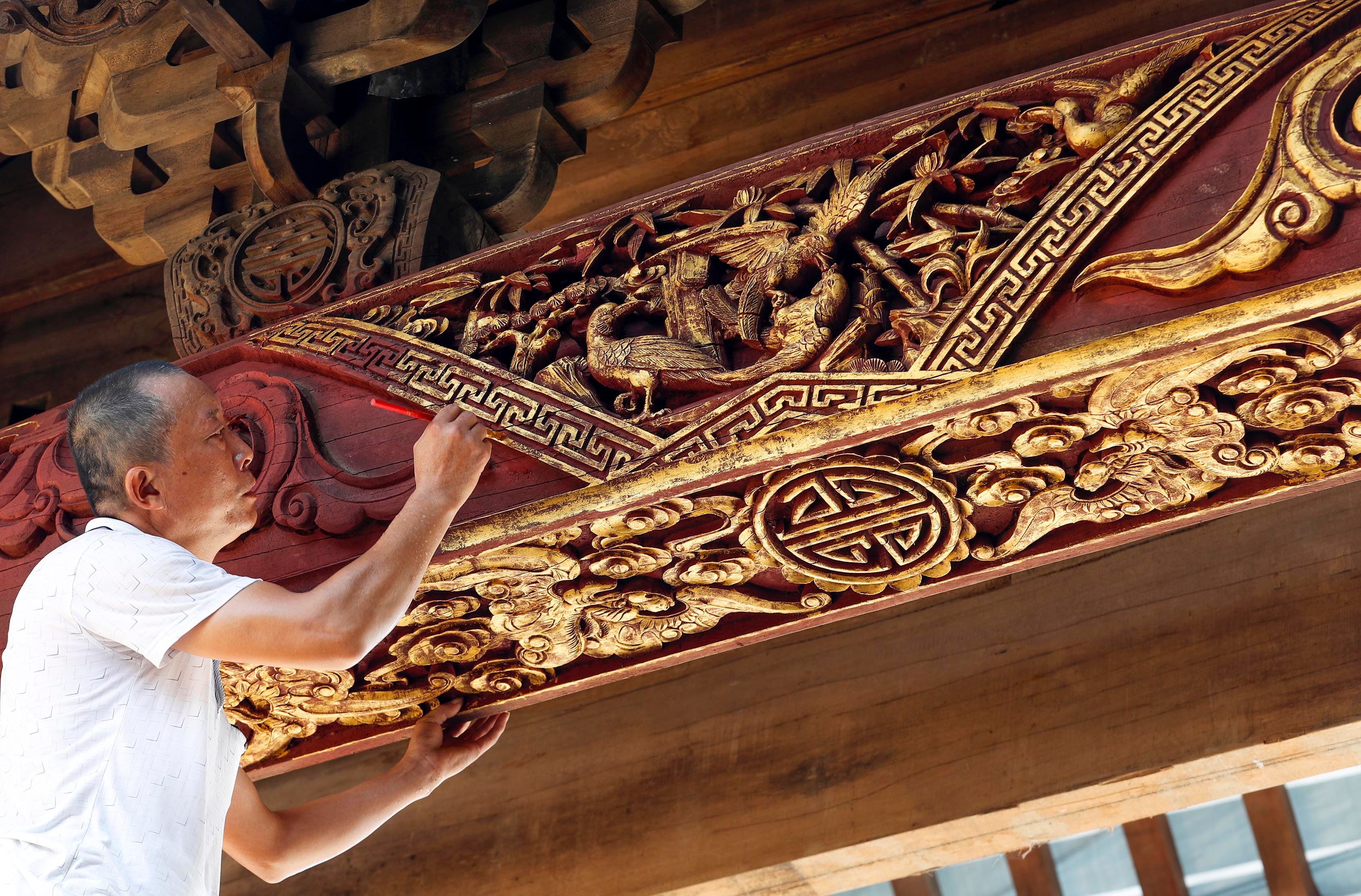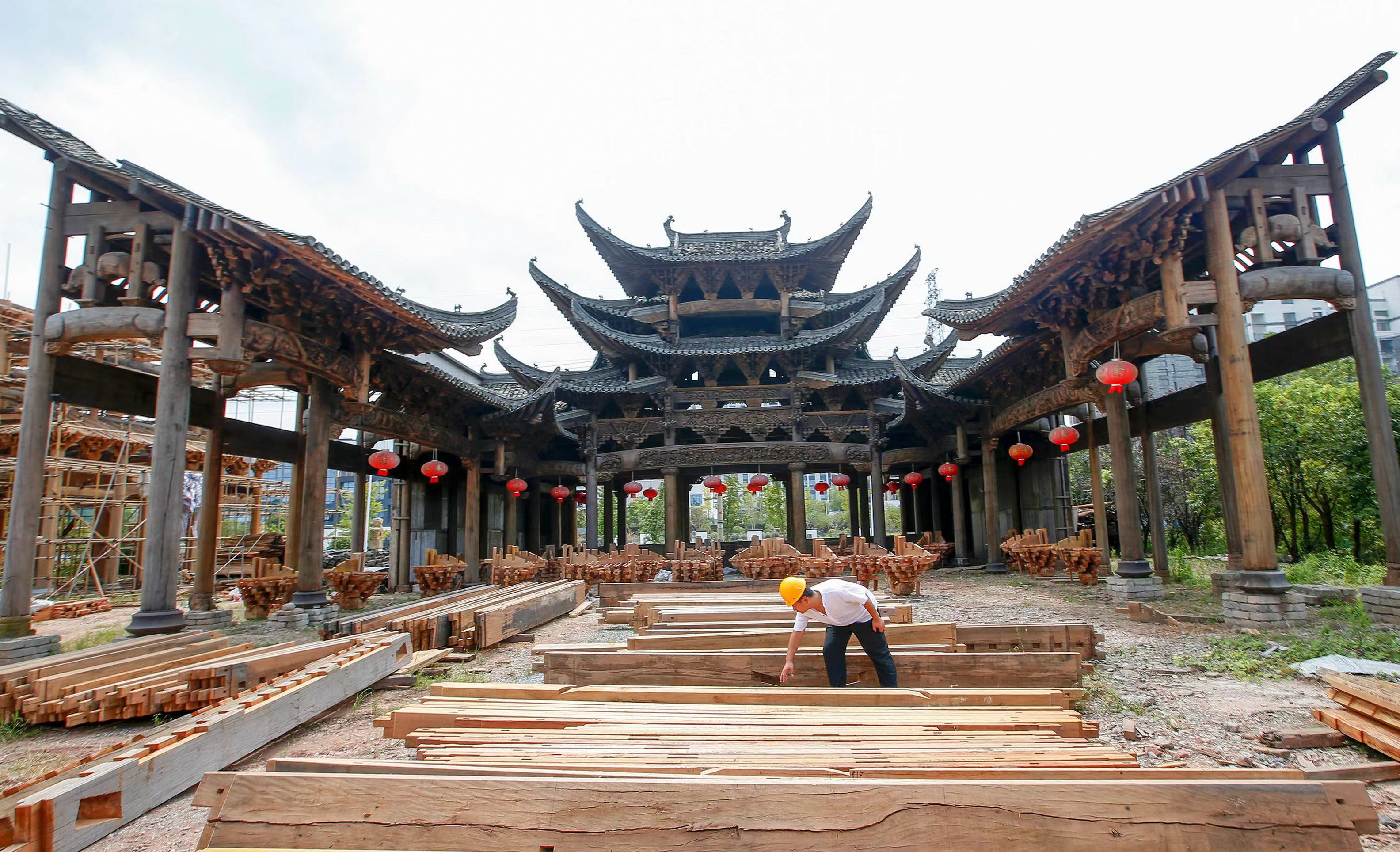Huangshan builds future from its past
THE ARTICLES ON THESE PAGES ARE PRODUCED BY CHINA DAILY, WHICH TAKES SOLE RESPONSIBILITY FOR THE CONTENTS

Thousands of timber planks, stones and bricks are being reassembled into a house with black tiles, high walls shaped like horses’ heads and refined wood and stone carvings.
But this is no game with Lego bricks. It is the construction of a house built in the ancient Huizhou style in Huangshan, Anhui province. While renovation of ancient houses has been happening for years and continues, the construction of new houses in ancient styles has also become important, using old, reclaimed building materials as well as new components.
Both trends are growing, leading to an architectural revival. Huangshan, in the historical Huizhou region, inspired this important branch of Chinese architecture. Many of these ancient buildings, with detailed carvings and decorations at first not apparent from their often simple exteriors, are considered to be of great cultural and economic value.
Pan Guodong, builder of the house mentioned above and head of Huangshan Huijiang Ancient Architecture Design Co Ltd, said this masterpiece residence has already been sold for an astonishing price of over 50 million yuan (£5.9 million).
“The construction of Huizhou-style houses has become a sound industry with complete upstream and downstream industry chains here in Huangshan. Rising local companies produce pseudo-classic Huizhou-style houses and sell them for commercial uses,” Pan said.
“Many companies also ask experienced craftsmen to repair some components taken from abandoned Huizhou-style buildings that were torn down to use in new, modern houses, or to rebuild old Huizhou-style houses,” he said.

Like Pan’s business, the city is injecting new life into the use of the centuries-old style through supporting development of the Huizhou-style architecture industry. In 2020, the sales revenue of the city’s ancient-style architecture industry amounted to more than 1.2 billion yuan (£142.6 million).
More than 200 local companies are participating in the construction of Huizhou-style buildings and related industry chains. In 2016, Su Tong, a businesswoman native to Huangshan, opened a bed-and-breakfast lodge using seven old houses in Chengkan, a village in Huangshan famous for its well-preserved houses from the Ming Dynasty (1368-1644).
When Su first saw what she called her “dream property”, she remembered it as gloomy and forlorn, with decayed wood that had been partly consumed by termites. “These houses were built by successful Huizhou merchants who accounted for almost half of China’s wealth between the late Ming Dynasty and the early Qing Dynasty (1644-1911),” she said. “Huizhou culture shouldn’t disappear with the passage of time.”
She spent millions of yuan restoring the seven run-down houses. Two years of reconstruction and interior work finally turned them into a cosy, elegant hotel. The 16 rooms in the renovated structures, which book for an average price of 1,500 yuan (£178) a night, are all booked at weekends. The hotel has become so popular that tourists have to make reservations two months in advance to get a room in peak seasons.
“Stepping into the hotel, I felt like I was living in the Huizhou region of ancient dynasties. It is really a retreat from busy urban life,” said Tan Ziyi, a 33-year-old bank employee from Nanjing, Jiangsu province, who booked three nights in the hotel during his vacation.
Previously published on Chinadaily.com.cn
